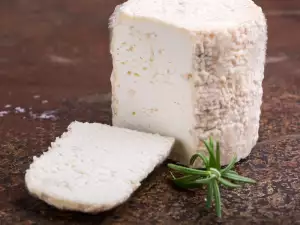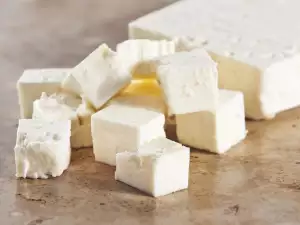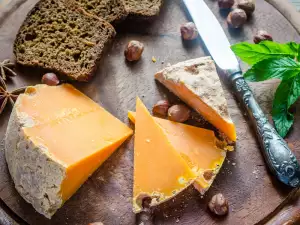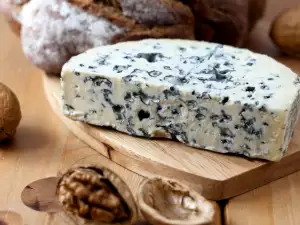Munster (Munster-géromé) is a French cheese made from cow's milk. Along with Camembert, Taleggio, Stilton and Limburger, it is among the smelliest cheeses in the world. It is also popularly known as "monster cheese" due to its unusual and even horrifying aroma.
Some chefs like to joke around, saying that when buying it, it needs to be placed in a closed container right away, otherwise there is a danger of someone actually being hurt by its monstrous smell. Despite its notoriety, the cheese is highly valued and finds presence in Fresh cuisine, as well as internationally.
History of Munster
Munster has an old and rich history. It is believed that it originated in the 7th century in a monastery of Italian Benedictine monks which was located on the territory of the modern day department of Vosges. Eventually, a settlement called Munster sprung up around the monastery. Its name was taken from the Latin word for monastery - Monasterium. That was how the cheese was given its name as well.
The monks were not allowed to consume meat, which was why they looked for an alternative in dairy products. For a very long time they tried different methods until they finally came up with the soft cheese that we know today. A cheese recognizable by its red crust and odor, reminding of both lush pastures and feet.
Composition of Munster

This dairy product is a source of numerous healthy components. It contains vitamin A, vitamin B1, vitamin B2, vitamin B4, vitamin B6, vitamin B9, vitamin B12, vitamin E, vitamin K, vitamin PP. Minerals such as selenium, iron, copper, zinc, potassium, phosphorus, sodium, calcium and magnesium are also present in Munster.
Production of Munster
Munster is among the cheeses made from raw milk (2 lb (1 kg) of cheese requires about 2 gal (8 L) milk). 1st the milk is heated to a temperature of 90°F (32°C). Then it is placed in a large container and the starter culture is added. After about an hour, the milk begins to thicken and the result is similar to cottage cheese. After, the substance is salted and divided into forms. They are left to mature in specialized moist cheese cellars where the temperature is low.
Younger cheeses are placed between older ones, to have the fermentation take place faster. Next, every 2 days the cheese is turned over and washed with special salted water. Thanks to this method, the cheese attains an orange hued crust.
As a result the crust of the dairy product may even turn red. Under it, the consistency that forms possesses the characteristic sharp smell of mountain pastures and feet. Its color is white to pale yellow. Normally, Munster is left to age between 5 weeks and 3 months.
Finally, the cheese is sold in the shape of pitas. They can reach a maximum diameter of 7 1/2″ (19 cm), 3″ (8 cm) in height and weigh up to 17.5 oz (500 g). There is also the so-called Petit Munster (little Munster), which is distinguished by its more modest size and weight of barely 5.5 oz (150 g).
Storing Munster
To maintain the cheese fit for consumption, store in a cool place, the refrigerator is best. It is recommended to have it wrapped in foil and placed that way in the fridge. Another option is to place the cheese in a food container. The goal remains the same - to prevent the smelly dairy product from having any contact with any of the other food products in the refrigerator so that it doesn't pass on its pungent odor to them.

If the cheese is stored at too low temperatures it can become crumbly and change its culinary properties. A cheese stored in this manner is more suitable for cooking instead of serving on its own. But otherwise, left in the refrigerator, Munster can remain fit for consumption up to about 2 weeks.
Cooking Munster
Even though the smell of Munster is not equally loved by all culinary experimenters, this funky cheese remains among the desired exotic products at the dining table. In case you want to surprise your guests and you're sure that its nontraditional smell is something they would go for, you can serve it on its own with a suitable drink. You can choose from white wines such as Pinot Gris and Pinot Blanc or red wines such as Pinot Noir.
The cheese is superb with all kinds of vegetables, including cucumbers, tomatoes, peppers, onions, arugula, spinach and others. It is particularly delicious with potatoes that still have their peels on. It can be widely used in the preparation of salads, soups, sauces, bakes, risotto. In small amounts it can be added to recipes for pizzas, sandwiches, spaghetti, macaroni and other pastas.
Benefits of Munster
Munster is a source of fats, proteins and carbohydrates that are required for the proper development of the body. The aforementioned healthy minerals found in it provide care for our bones, skin, hair and nails. There are also decent amounts of vitamins contained.
We know we need vitamin A to maintain keen vision, while the vitamins from group B are responsible for muscular tissue and nervous system health. Consumption of Munster, even in small quantities, has an overall fortifying effect and is recommended during the seasons when we are vulnerable to colds and viruses. It has also been proven that the beneficial components in the cheese have a positive influence on the water balance in our body.
The unique Munster cheese can be used in the preparation of:
- bruschettas;
- or in many mushroom dishes.


















Comments